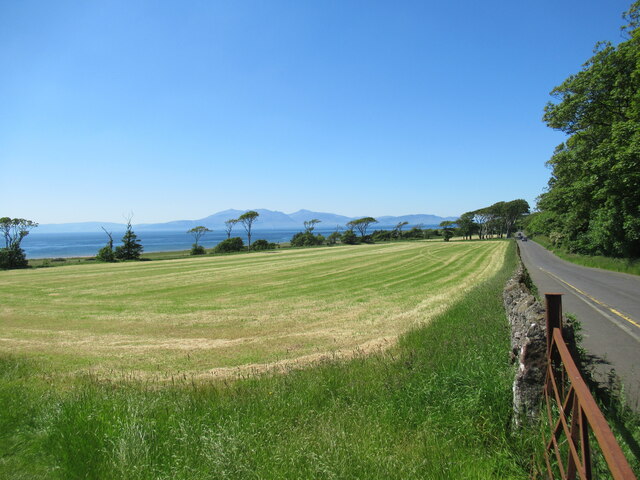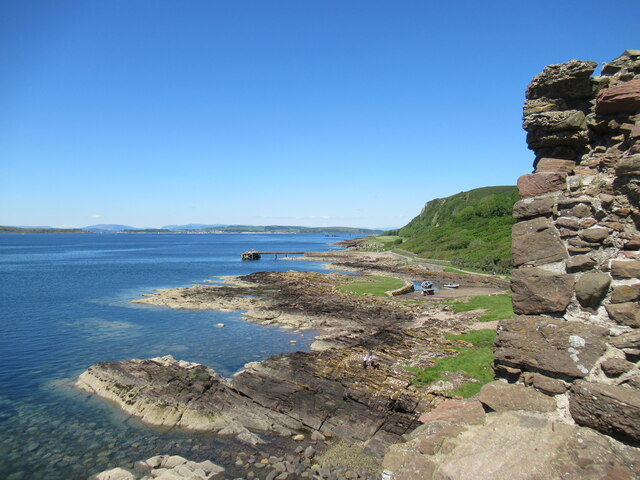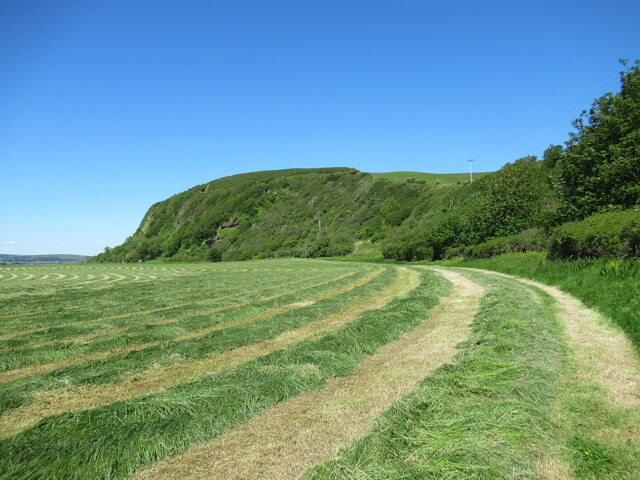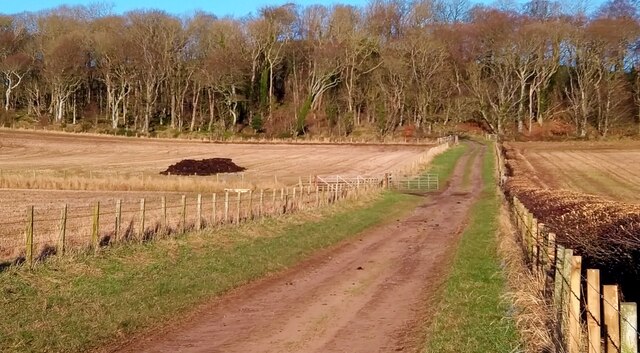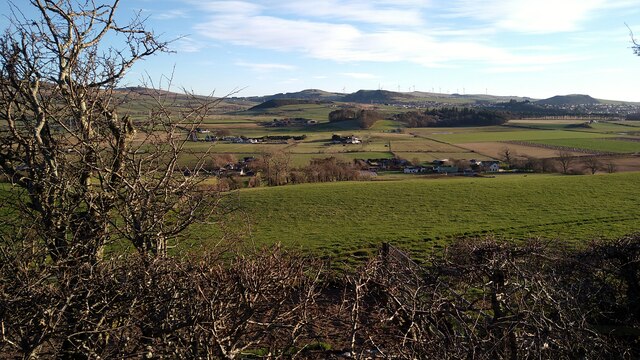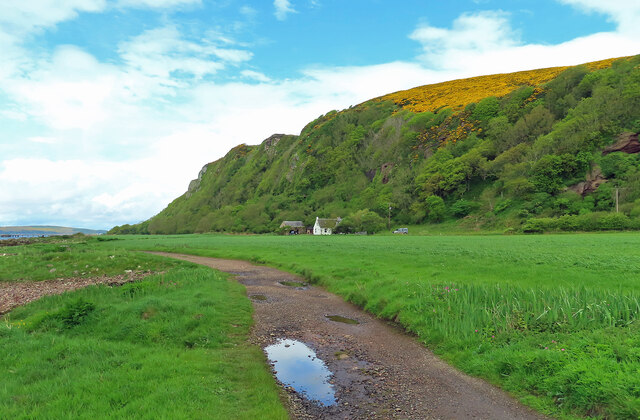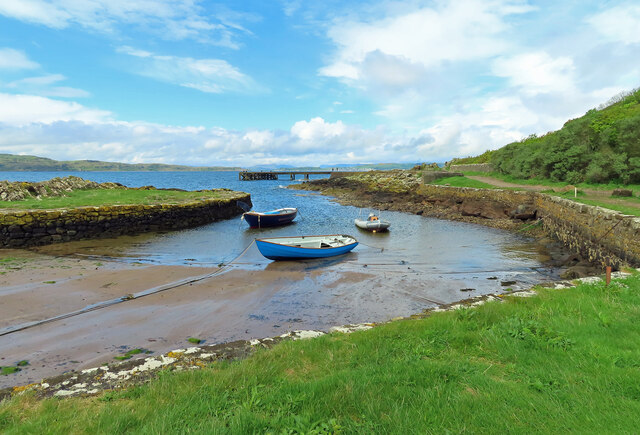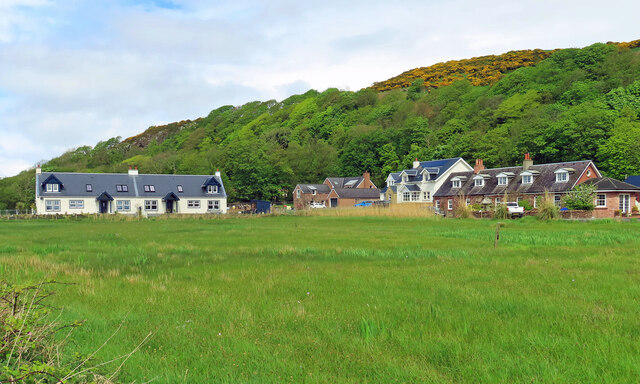Ardneil Bay
Bay in Ayrshire
Scotland
Ardneil Bay
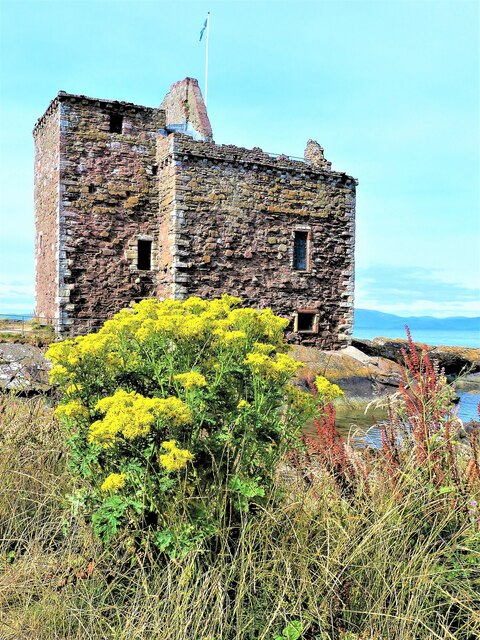
Ardneil Bay is a picturesque bay located on the west coast of Scotland, specifically in Ayrshire. It is situated between the towns of West Kilbride and Seamill, and it forms part of the larger Firth of Clyde. The bay stretches for approximately 1.5 miles and offers stunning panoramic views of the surrounding landscape.
Ardneil Bay is renowned for its sandy beach, which is popular with both locals and tourists. The beach is relatively sheltered, making it an ideal spot for families and water sports enthusiasts. The clean and well-maintained sands provide a perfect playground for sunbathing, picnicking, or leisurely strolls along the shore.
The bay is also home to a variety of wildlife, including seabirds and marine life. Visitors may spot gulls, oystercatchers, and even seals basking on the rocks or swimming in the clear waters. Nature lovers can explore the nearby Ardneil Point, a designated Site of Special Scientific Interest (SSSI), which offers opportunities for birdwatching and observing the unique flora and fauna of the area.
Ardneil Bay boasts excellent facilities, including ample parking, public toilets, and nearby cafes and restaurants. The bay is easily accessible, with a main road running parallel to the beach, allowing for convenient transportation and easy day trips from nearby towns and cities.
Overall, Ardneil Bay offers a tranquil and scenic coastal experience, combining natural beauty, recreational activities, and an abundance of wildlife, making it an attractive destination for visitors seeking a peaceful retreat or a day out by the sea.
If you have any feedback on the listing, please let us know in the comments section below.
Ardneil Bay Images
Images are sourced within 2km of 55.69387/-4.8905395 or Grid Reference NS1848. Thanks to Geograph Open Source API. All images are credited.

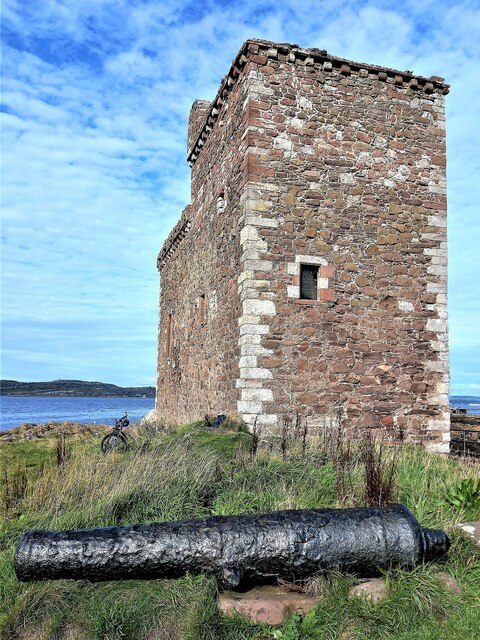
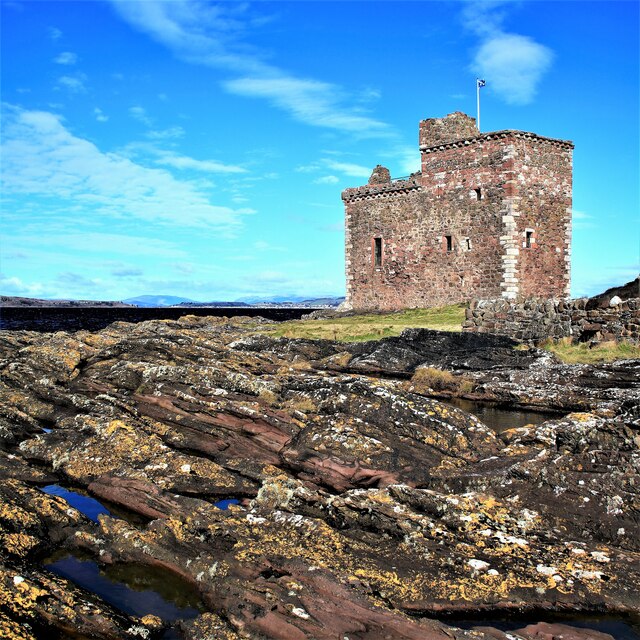
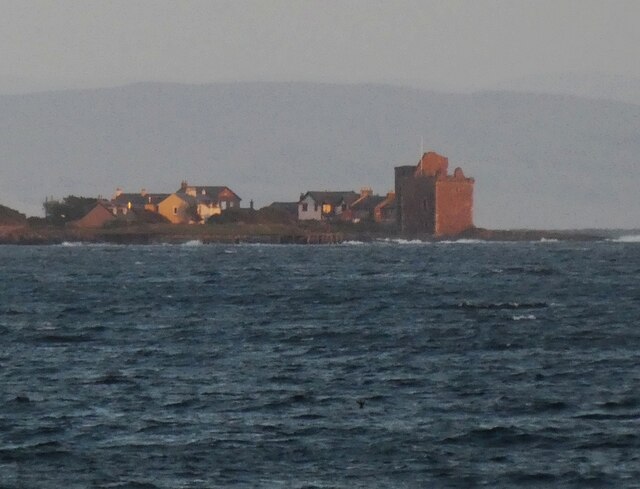
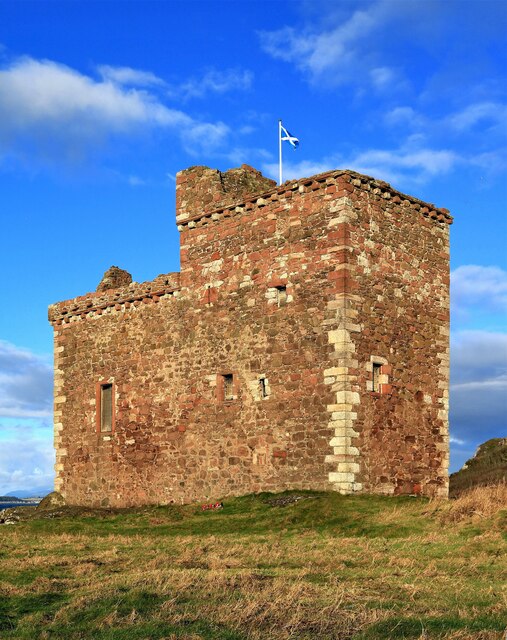
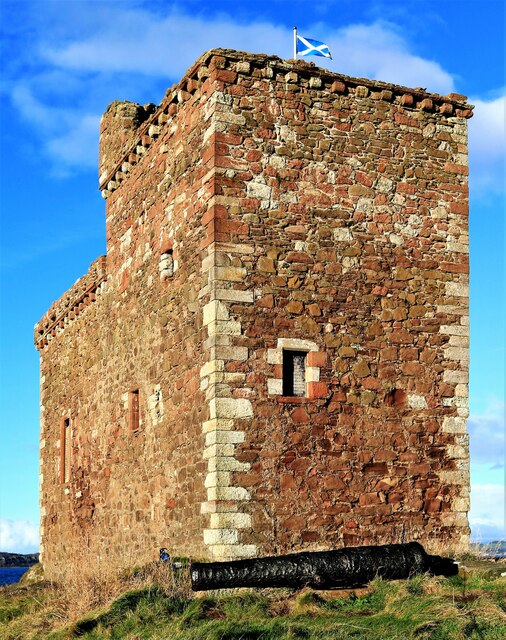
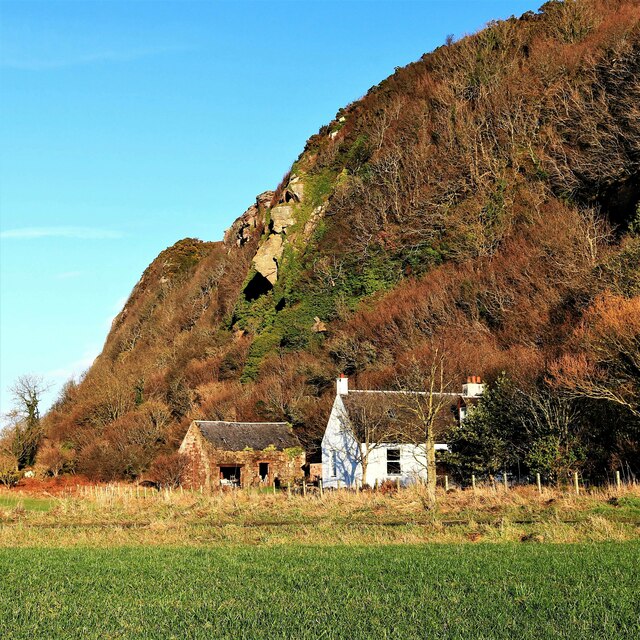
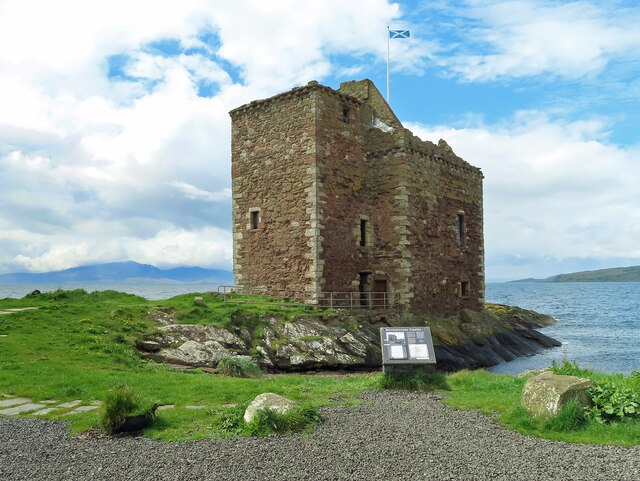
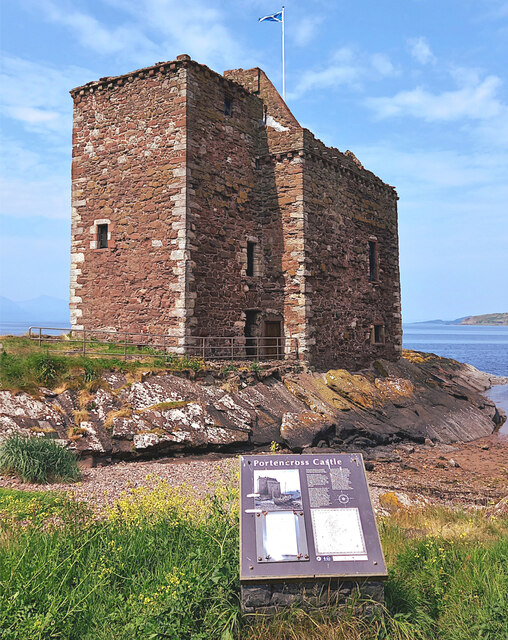
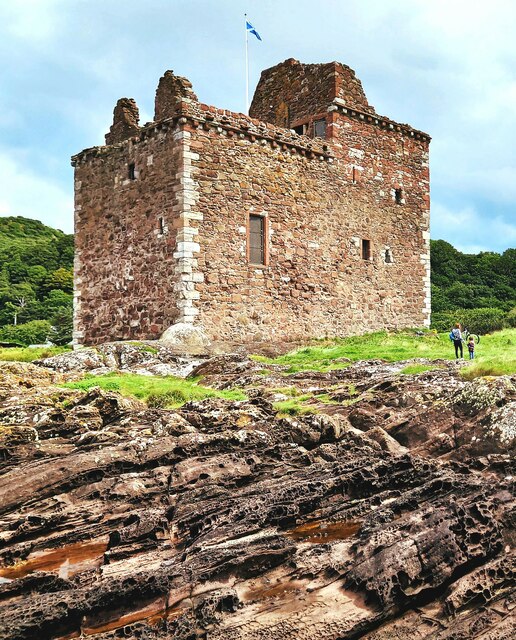
Ardneil Bay is located at Grid Ref: NS1848 (Lat: 55.69387, Lng: -4.8905395)
Unitary Authority: North Ayrshire
Police Authority: Ayrshire
What 3 Words
///majoring.daffodils.outbound. Near West Kilbride, North Ayrshire
Nearby Locations
Related Wikis
Portencross
Portencross (Scottish Gaelic: Port na Crois) is a hamlet near Farland Head in North Ayrshire, Scotland. Situated about three kilometres (two miles) west...
Portencross Castle
Portencross Castle, also known historically as Portincross Castle, is situated in Portencross, on the west coast of Scotland, about 3 km from West Kilbride...
Murder of Mary Speir Gunn
Mary Speir Gunn (31 August 1862 – 18 October 1913) was murdered in a shooting attack at the isolated Northbank Cottage near Portencross in North Ayrshire...
Seamill
Seamill is a village in North Ayrshire on the west coast of Scotland, about 5 miles north of Ardrossan and 8 miles south of Largs, on the east coast of...
Nearby Amenities
Located within 500m of 55.69387,-4.8905395Have you been to Ardneil Bay?
Leave your review of Ardneil Bay below (or comments, questions and feedback).
